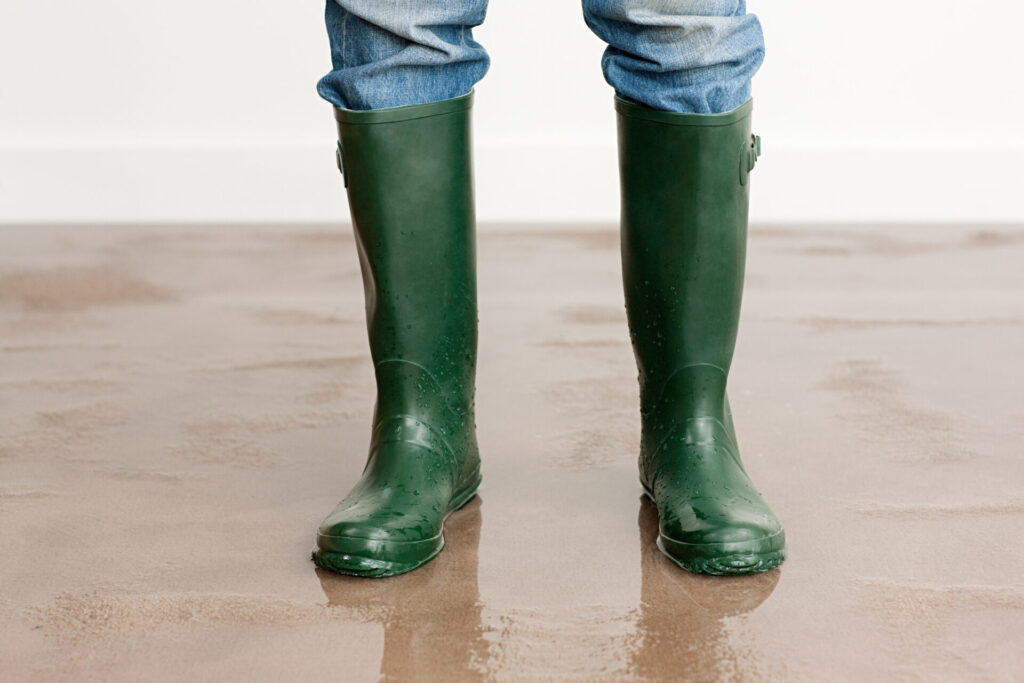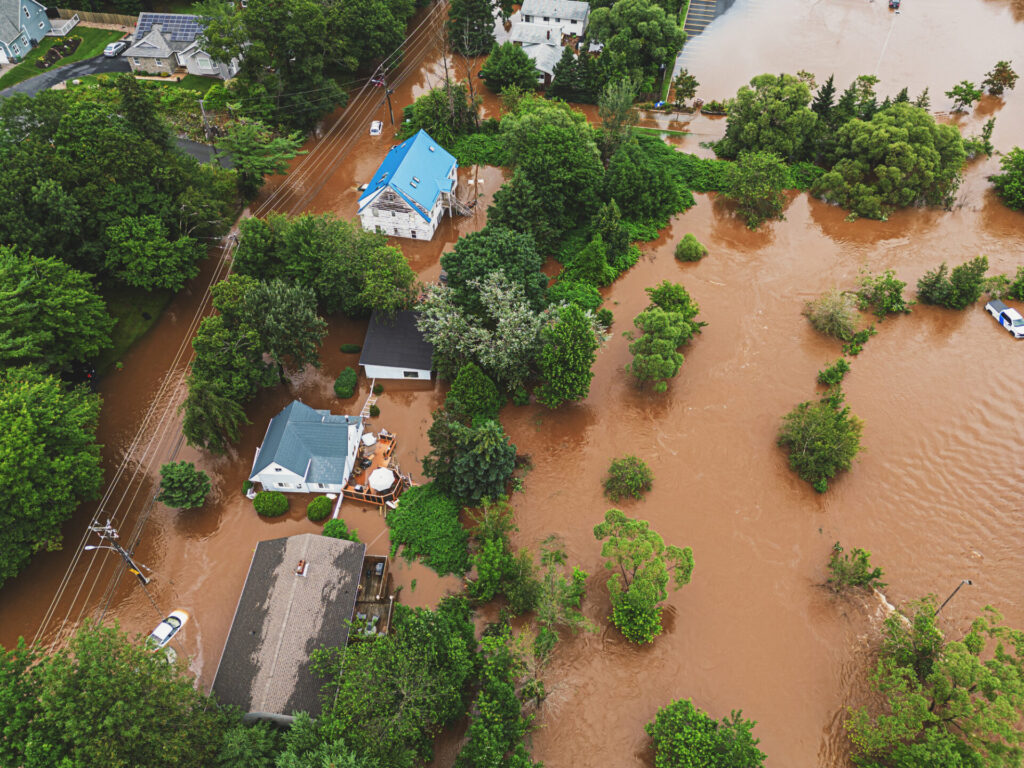When a flood strikes, it can be devastating and overwhelming if your home is affected. But while you can’t stop extreme weather, there are things you can do to manage the damage.
According to a report by the Federal Government, flooding is Canada’s most frequent natural disaster impacting Canadians, with two out of ten homeowners at risk.
So, what can you do? Here are some important tips.
What should I do if my house floods?

When a flood affects your home, there are several important steps to ensure safety and minimize damage.
First step? Ensure the safety of all inhabitants by evacuating to a safe location if water levels become too high.
Before entering a flooded area, whether it’s your basement or backyard, put on protective gear. Flood water can contain contaminants, bacteria, fecal matter and animals.
Next, turn off the electricity, providing your electrical box is not in a flooded area. If your switch is in a flooded basement, call an electrician. Next, turn off any water lines to determine the source of the flooding. Look for the main valve in the house. To help prevent mould and mildew from water damage, if possible, open windows and doors to set up fans to get airflow. While water removal is critical, in many cases, a professional flood salvage company may be needed.
Make sure to call your insurance company before you talk to trades or bring in a clean-up crew. The sooner you start your claim, the quicker the process will be. Take photos of the water damage before the start of the clean-up to help your insurance company. You’ll also want to keep receipts if you hire a plumber or electrician to deal with shut offs.
How can I prepare for extreme weather?
The number one thing you can do to prepare for extreme weather is call your insurance company to review your policy and check what is covered before storm season begins. If you need to adjust your coverage, it’s important to do that before a storm hits. Water Coverage, Home Equipment Breakdown Coverage¹ and Service Line Coverage¹ are great options to consider adding to your property insurance policy for additional coverage. While on the call, reviewing your auto insurance policy is also a good idea. Damage from hail or falling trees can be costly to repair.
It is also a good idea to get a house assessment done to determine what may need upgrading or replacing, such as the roof, fence, gutters and windows. You’ll also want your sump pump checked, or consider having one installed as they can help save many homeowners from costly basement and foundation repairs. Even your driveway and garden should be assessed. Are your driveway and patio properly graded away from the house? Does water have a clear path to flow with no blockages from drainpipes? The more you know, the better you can prioritize.
What are some common mistakes we make with insurance?
One big mistake is getting the cheapest insurance coverage. While the price may fit your immediate budget, it might not give you the full coverage you need. Speaking to an insurance agent or broker to discuss your needs can help get you the right policy that provides enough coverage while being mindful of budget.
Another issue is not regularly reviewing your policy with CAA to ensure you have the right coverage. CAA Insurance² offers complimentary policy reviews which could help you save money.
Speak to a licensed CAA Insurance Agent by calling CAA Insurance first! Did you know CAA Members save 10%³ on CAA Home Insurance policies and even more if they bundle that with CAA Auto Insurance? Be sure to talk to CAA Insurance about your property coverage and how you can better prepare for potential weather events such as flooding.
1 Home Equipment Breakdown Insurance is underwritten by CAA Insurance Company, Claims administered by Mutual Boiler Re. Service Line Coverage is underwritten by CAA Insurance Company.
2 Auto and Property Insurance are underwritten by CAA Insurance Company.
3 To qualify for the discount, you must be a current CAA Member in good standing (CAA Membership dues paid in full by Membership expiry date).
®CAA trademarks are owned by, and use is authorized by, the Canadian Automobile Association.
Certain conditions, limitations and underwriting guidelines apply.

